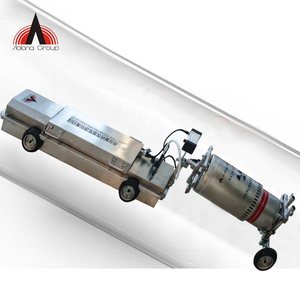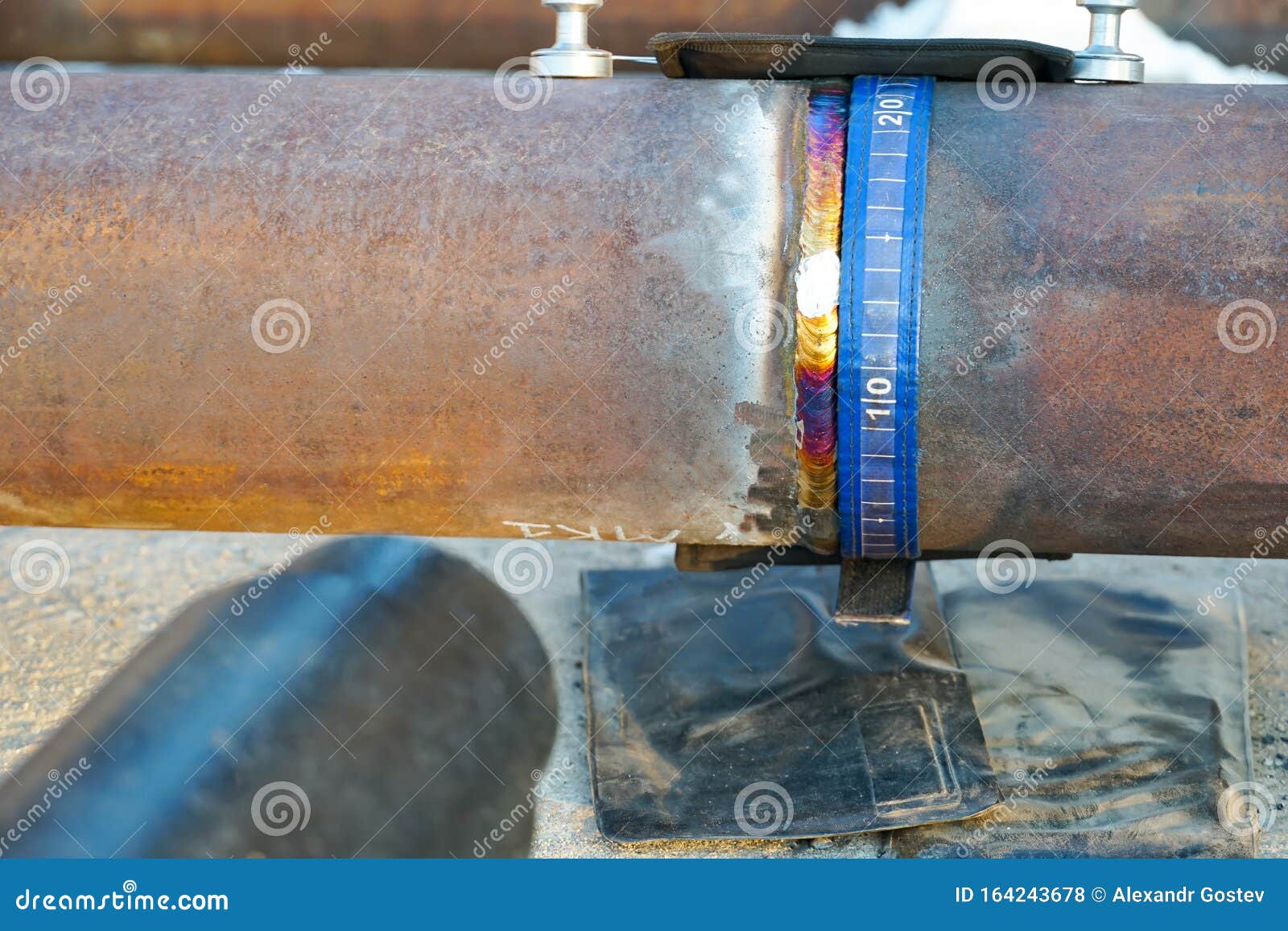Pipeline Welding Inspection: Ensuring Safety and Quality in Every Weld
Pipeline Welding Inspection: Ensuring Safety and Quality in Every Weld
Blog Article
Comprehensive Overview to Pipeline Welding Examination: Ensuring Integrity and Security in Pipeline Construction and Maintenance
The integrity and safety of pipelines are extremely important in today's facilities landscape, highlighting the critical duty of welding evaluation in pipe construction and upkeep. Pipeline Welding Inspection. The complexities entailed in welding evaluation raising important questions regarding market requirements and the progressing innovations that might redefine these methods.

Importance of Welding Examination
Welding examination plays an important duty in making sure the honesty and security of pipe systems. It acts as a basic process that confirms the high quality and integrity of welded joints, which are frequently the most vulnerable points in pipeline construction. With organized examination, assessors can identify prospective defects such as cracks, porosity, and incomplete fusion, which might compromise the structural stability of the pipeline.
The value of welding inspection extends beyond plain conformity with industry requirements; it additionally safeguards public health and wellness and the setting. Pipes bring hazardous products posture considerable threats if failures take place. Effective evaluation procedures aid avoid tears and leakages, alleviating environmental damages and safeguarding neighborhoods. Additionally, comprehensive assessments can boost the longevity of pipeline systems, reducing the requirement for pricey fixings and downtime.
In enhancement to ensuring safety and compliance, welding examination cultivates a culture of quality control within organizations. By prioritizing assessment throughout the welding procedure, business can develop an online reputation for integrity and excellence, ultimately causing boosted consumer confidence and business chances (Pipeline Welding Inspection). Hence, the value of welding inspection can not be overstated in the context of pipeline building and construction and upkeep
Secret Welding Procedures
Numerous welding processes are employed in pipeline construction, each with its very own advantages and applications. Amongst one of the most widely made use of techniques are Shielded Metal Arc Welding (SMAW), Gas Tungsten Arc Welding (GTAW), and Gas Metal Arc Welding (GMAW) SMAW is preferred for its flexibility and capacity to carry out well in different ecological problems, making it ideal for field applications.
GTAW, typically referred to as Tungsten Inert Gas (TIG) welding, is identified for its ability to create premium welds with outstanding control over warmth input, making it optimal for thin-walled pipelines and stainless steel products. GMAW, or Steel Inert Gas (MIG) welding, supplies high deposition rates and is reliable for massive tasks, usually employed in the fabrication of pipelines in controlled atmospheres.
Furthermore, Immersed Arc Welding (SAW) is utilized for its deep infiltration and high productivity, especially in the building and construction of large-diameter pipelines. Each of these processes contributes to the general honesty and security of pipeline constructions, allowing welders to pick one of the most ideal method based upon product type, task needs, and environmental conditions. Recognizing these essential welding procedures is vital for effective pipeline welding inspection.
Usual Defects and Their Impact
Porosity, identified by tiny gas pockets trapped within the weld, deteriorates the material and can result in leakages. Fractures, which may happen because of thermal stress and anxieties or improper air conditioning, can propagate and about his result in structural failure under pressure. Damaging, where the base steel is deteriorated along the weld grain, decreases the efficient cross-section of the pipeline, increasing the danger of fracture.
Insufficient blend takes place when the weld steel does not effectively bond with the base metal, resulting in weak areas that may fail under stress and anxiety. Slag addition, the entrapment of non-metallic product within the weld, can also compromise the joint's stability. Recognizing and resolving these defects early in the construction process is critical to ensuring the long-lasting reliability and safety and security of pipeline systems, therefore safeguarding both the environment and the facilities.
Examination Tools and methods

Aesthetic assessment is the first line of defense, permitting examiners to determine surface area irregularities, imbalance, or various other noticeable issues. Ultrasonic testing utilizes high-frequency acoustic waves to detect internal flaws, providing exact deepness dimensions and identifying issues without damaging the weld. Radiographic testing makes use of X-rays or gamma rays to generate photos of the weld, allowing the recognition of inner spaces, cracks, or additions.
Magnetic bit testing is particularly reliable for finding surface and near-surface stoppages in ferromagnetic products. This strategy includes using a magnetic field and fine iron bits to the weld, disclosing issues via the build-up of fragments at flaw sites.
In enhancement to these strategies, specialized tools such as automated ultrasonic screening tools and electronic radiography systems boost evaluation precision and effectiveness, guaranteeing a thorough examination of pipe welds throughout building and upkeep.
Best Practices for Conformity
Sticking to best methods for compliance in pipe welding examination is critical for making certain the stability directory and safety of the infrastructure. Organizations has to establish an extensive top quality administration system that lines up with market requirements such as ASME, API, and AWS. This includes developing comprehensive welding treatments that specify the certifications, strategies, and products required for welders.
Routine training and qualification of evaluation personnel are necessary to keep high expertise levels. Assessors must recognize with various non-destructive testing (NDT) approaches, including ultrasonic testing, radiographic testing, and visual examination, to successfully identify potential flaws.
Documentation plays an essential function in conformity; maintaining accurate records of assessments, weld procedures, and personnel certifications helps to ensure traceability and liability. Set up audits and reviews of welding practices should be conducted to identify areas for enhancement and guarantee adherence to established protocols.

Verdict
In conclusion, the implementation of extensive welding examination methods is vital for guaranteeing the stability and safety of pipe building and upkeep. Constant improvement in assessment procedures will contribute to the longevity and integrity of pipe systems, underscoring the essential duty of welding evaluation in the market.
The stability and safety of pipelines are paramount in today's framework landscape, highlighting the crucial role of welding inspection in pipe building and construction and upkeep. Recognizing these key welding processes is essential for efficient pipe welding examination.
Adhering to best practices for compliance in pipe welding assessment is crucial for making certain the stability and security of the infrastructure.In verdict, the implementation of extensive welding examination procedures is extremely important for making certain the honesty and safety and security of pipe building and maintenance. Continual enhancement in inspection procedures will certainly add to the durability and integrity of pipe systems, underscoring the vital function of welding assessment in the industry.
Report this page